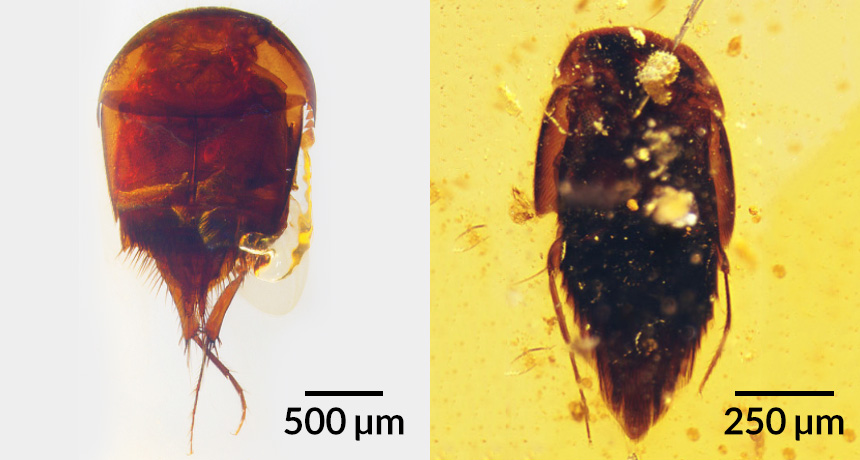
BAD HOUSEGUESTS Some ancient beetles survived by freeloading off social insects such as termites. Two new beetle fossils (Cretotrichopsenius burmiticus, left and Mesosymbion compactus, right) suggest that the behavior, known as social parasitism, has endured for about 100 million years.
From left: C. Cai et al/Current Biology 2017; S. Yamamoto et al/Nature Communications 2016





